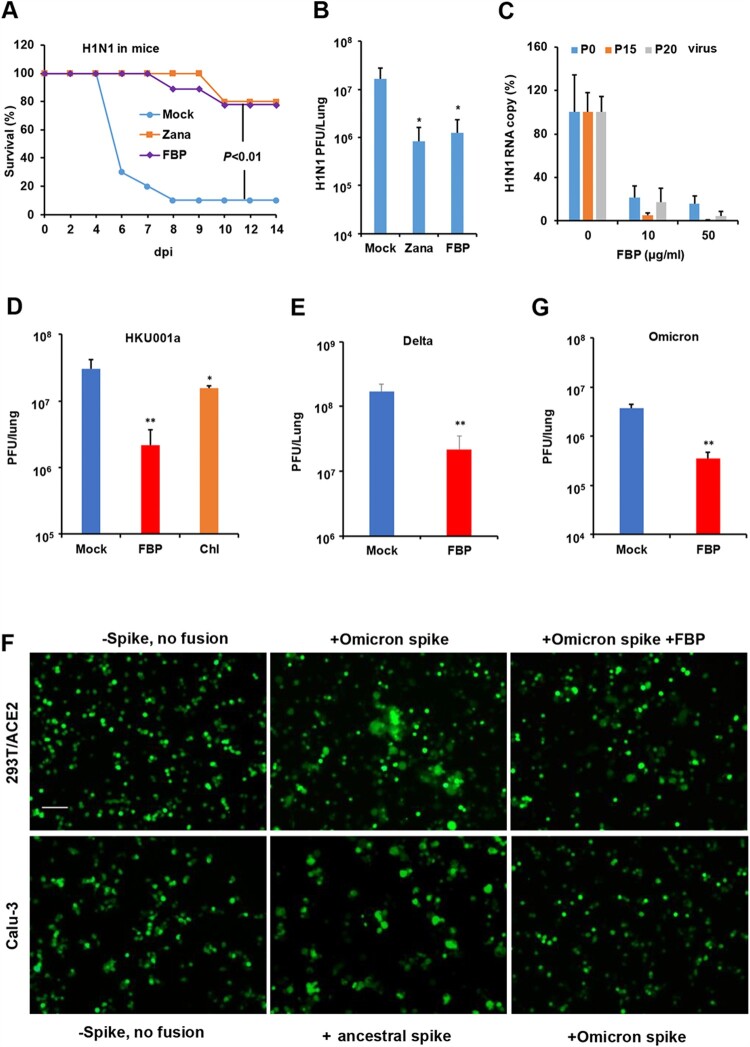Figure 4.
FBP inhibited influenza virus and SARS-CoV-2 in animals. (A) The survivals of A(H1N1)-infected mice intranasally treated with FBP (2 mg kg−1, n = 9), zanamivir (Zana, 1.6 mg kg−1, n = 5) or PBS (Mock, n = 9) at 6 hpi with two more doses the following day. P-value was calculated by the Gehan–Breslow–Wilcoxon test. (B) FBP inhibited A(H1N1) virus replication in mouse lungs (n = 5) at 2 dpi. (C) Antiviral efficiency of FBP against parent H1N1 (P0), 15-passaged virus (P15) and 20-passaged virus (P20) in MDCK cells (n = 3). Viral RNA copies in cell supernatants were measured at 18 hpi and normalized to the untreated virus (0). (D) FBP or chloroquine (Chl, 2 mg kg−1) inhibited SARS-CoV-2 (HKU001a) replication in hamster lungs at 2 dpi (n = 4). (E) SARS-CoV-2 (Delta, B.1.617.2) replication in hamster lungs treated with inhaled PBS (Mock, n = 8) or FBP (2 mg kg−1, n = 4). Antivirals were intranasally inoculated to animals at 8 hpi, and two more doses were given to hamsters the following day. (F) FBP effectively inhibited Omicron-spike-mediated fusion in 293T/ACE2 cells (upper panel) and Omicron-spike-mediated fusion in Calu-3 cells was not observed (lower panel). 293T/ACE2 cells or Calu-3 cells were co-cultured with 293T expressed with an ancestral spike from HKU001a or Omicron spike with or without the treatment of FBP (250 μg ml−1). 293T without spike (-spike) was used as the no fusion control. Scale bar = 100 μm. Experiments were repeated twice. (G) SARS-CoV-2 (Omicron, B.1.1.529) replication in hamster lungs treated with PBS (Mock, n = 4) or FBP (2 mg kg−1, n = 4). Infected hamsters were intranasally inoculated with PBS or FBP at 8 hpi, and two more doses were given to hamsters the following day. * indicates P < .05 and ** indicates P < .01 compared with mock. P-values were calculated by the two-tailed Student’s t-test. Data are presented as mean ± SD of independent biological samples.

